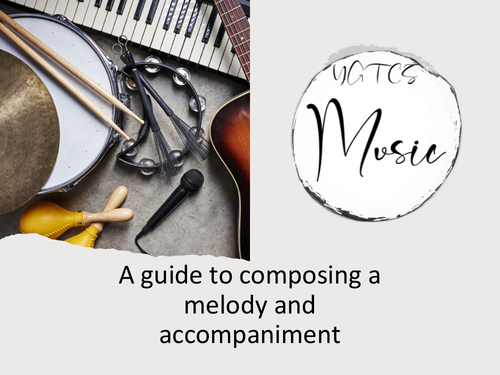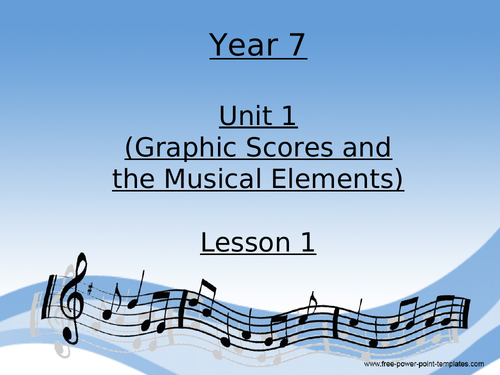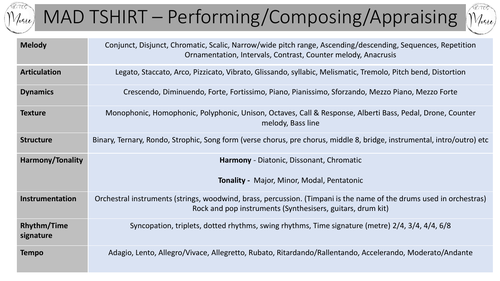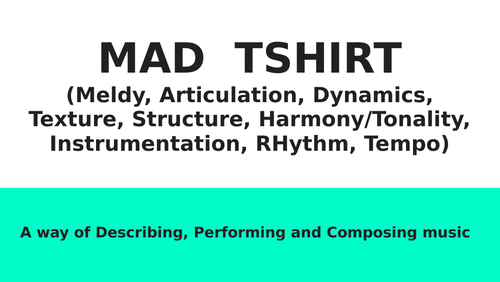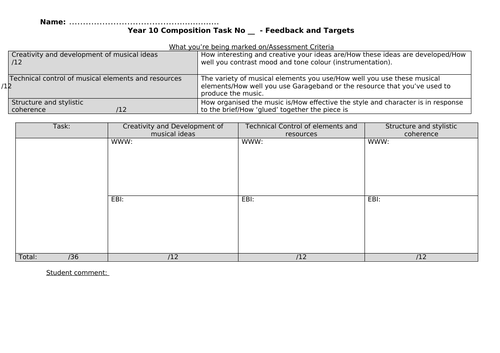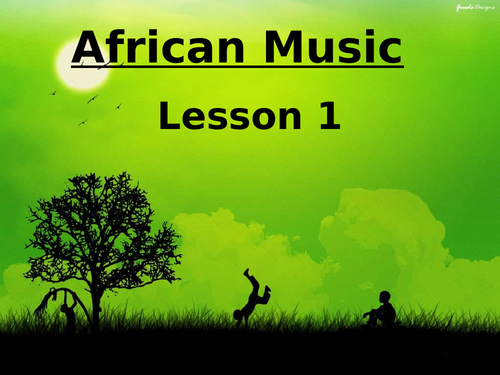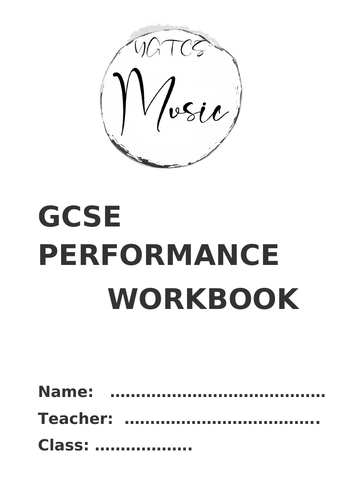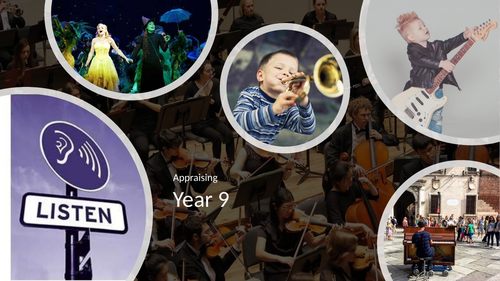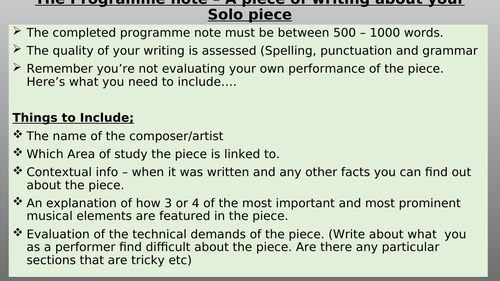
18Uploads
3k+Views
1k+Downloads
All resources

GCSE Music MAD TSHIRT Worksheets
I created these worksheets as I was finding that my students were struggling to identify key terminology/vocabulary associated with MADTSHIRT which we use as a pneumonic for teaching the fundamental music elements (Melody, Articulation, Dynamics, Texture, Structure, Harmony/Tonality, Instrumentation, Rhythm and Tempo). They enjoy using this pneumonic to help them analyse and appraise music. I have mainly used these worksheets as starter activities but they could be cut and laminated as individual statements.

WJEC GCSE Music Composition booklet/guide
I put this together to help Year 11 pupils with the free composition.
I created the word document and gave it out to pupils as a help booklet for them to keep beside them whilst composing. The 2nd document I incorporated into the same booklet. It includes a list of compositional devices, different types of structures and definitions of such terms, and a section on 'Do’s and Don’ts . The front page serves a checklist so they can sign things off once they’ve been incorporated.

GCSE Music - A guide to composing a melody AND accompaniment
I put this resource pack together to aid students step by step in how to compose a melody. My pupils have always struggled with composing melodies and often end up composing very ‘samey’, non exciting accompaniments. I have used some other tes users’ sheets in this pack along with my own and collated it all together.

Notation/Theory Exercises for GCSE Music
I created these exercises to assist pupils in their reading/notation skills. The powerpoint contains 15 slides, so 15 exercises. Most exercises have around 5/6 questions per score. Questions involve pupils having to work out time and key signature, identify intervals, note names, note values, rhythmic devices and analyse the shape and/or motion of the melody and/or accompaniment.

007 MAD TSHIRT Task GCSE Music
An introduction to film music. Pupils are given a piece of music to analyse using MADTSHIRT. I get them doing this in groups where they create a brain storm poster of their answers. You can do it however you like. The principle is that pupils are applying the musical concepts of MADTSHIRT to a piece of music which they can then go on to perform or use as a basis for composing. I do an example with them first (Swan Lake) before they do their own with 007. Both pieces of sheet music are included on the powerpoint.

Year 7 African Music/ 'Banua'
This is a whole unit’s worth of work based around the topic of African music. 39 slides in total which includes lyrics for 2 traditional African songs; 'Senua De Dende, ‘Siyahamba’ and includes all the parts for Banua.

GCSE Music Appraising /Revision questions based on MAD TSHIRT with embedded links. Answers included.
Activities such as match the terms with its definnition for every element of MAD TSHIRT which covers all the associated terms and definitions. Then for each element (Melody, articulation, texture, structure, harmony and tonality, instrumentation, rhythm and metre and tempo) there are 5 listening tasks, so 45 in total. The youtube links are embedded as are the answers for each listening activity.

Year 7 Powerpoint - Graphic scores & Rhythmic notation
48 slides designed to supplement a unit of work for Year 7, introducing them to basic note values and graphic scores.

GCSE Music MAD TSHIRT Summary/Vocabulary sheet
To enable pupils to correct match vocabulary I created this all in one summary sheet. It covers most of the terms that feature in the appraising/exam papers but is not an exhaustive list. It’s designed to be pupil friendly.

'Time Lapse' Arrangement Task with Listening task and answers
An introductory listening task to ‘Time Lapse’ with answers. The youtube link is embbedded into the powerpoint.
All the parts are included - chords, bass line, melody 1, 2 and 3.
GCSE Composing criteria is also included, as I do this with my Year 9 GCSE class and so there is also a section on MAD TSHIRT included.

WJEC GCSE Composition Feedback Sheet
In year 10 I give my pupils 4 composing tasks; 1 based on each area of Study. This is the marksheet I give the pupils.

WJEC GCSE Music Composing Task for Area of Study 1 - Musical Forms and Devices
This is the first composition task that I give my Year 10’s which is marked/assessed. It is a complete scheme of work which guides the pupils through how to go about composing to incorporate contrast and how to develop a melody and accompaniment. There is a section on chord inversions to help pupils with developing an accompaniment as well as how to include musical devices such as drone/ostinato. There is a also a section on how to develop a melody which covers a range of melodic devices such as sequences, ornamentation and scalic passages etc.

Powerpoints x4 for Year 7 Music - Elements/African music/Calypso/Classroom orchestra
4 visually attractive powerpoints on each of the following;
Classroom Orchestra
Calypso
African Music/Banua
Elements of music
Each powerpoint includes general information/background knowledge of the particular genre/topic, unit objectives, appraising activities, starter activities, sheet music (performance piece), literacy and assessment.

Folk Music Appraising/Listening Worksheet with answers
In Year 9 GCSE we look at different genres of music as an introduction to GCSE. This is a listening activity that I created on 3 pieces of folk music. It can be set as homework or completed in lesson.

WJEC GCSE Performance Workbook
I made this for Year 9 when they first begin GCSE Music, but could be given to pupils in Year 10. It’s designed to embed performance into their routine and so it doesn’t become something that is left to the last minute.Includes lots of tips for the solo and ensemble performance.
It includes the performance criteria taken directly from the spec as well as the programme note criteria, also taken directly from the spec.
There are pages devoted to peer assessment where pupils use the criteria and make a comment on WWW and EBI.
There is also a practice diary that has to be signed off by parents and/or peripatetic teachers. The pupils are expected to comment on what aspects of their piece they have worked on and reflect on what they did well and need to improve.
There is also a section for regular target setting and reflecting on progress.

41 slide PPT of Appraising/Listening questions with Answers and youtube links
I made this for my Year 9 GCSE as an introduction to appraising and is designed to get them use to new terminology and being able to apply it correctly. Depending on the ability of your pupils it could be used with Year 7/8.
This is a 41 slide presentation which features between 3- 5 questions per piece of music. Each slide comes with the youtube link for that particular song/piece and is followed by the answers on the next slide. I have tried to include a variety of genres and styles.

WJEC GCSE Music Area of Study 1 Appraising task with answers
A listening exercise with differentiated questions (easier, medium and hard) based on music from the Musical forms and devices WJEC suggested listening list
This could be set as homework and/or completed online as the youtube links are provided. Answers are attached.

Help with writing a Programme Note - WJEC GCSE Music
I put this together to help GCSE pupils with the writing of the programme note. Feel free to edit as you wish!



